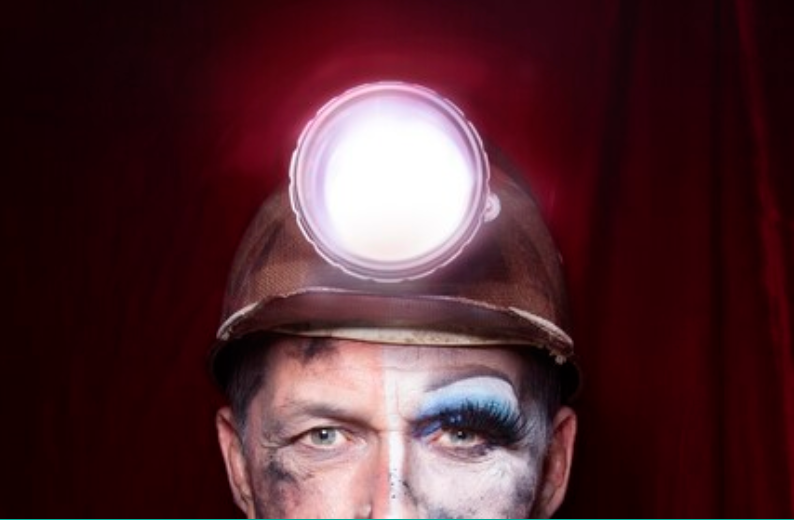
26 – 30 April
It is 1962 and a group of miners in South Yorkshire are doing what they so often do after work: rehearsing for the local gala. With the church organist on piano, they intend to belt out the old working men’s club favourites, even as the musical landscape of the country is undergoing a revolution. But the trials of life will prove far more disruptive to their plans than the tribulations of pop music and rock’n’roll.
This might be a niche point to start on, but as a Northerner living down South my hackles do get raised by depictions of Northerners down here that lean in on stereotype or rely on parochial mockery. I still remember my first trip to Stratford-upon-Avon where the clownish characters of The Tempest were bestowed with broad Mancunian accents. The Glee Club is by no means a hostile play, but I was somewhat irked by its clear appeal to fetishizing those-funny-Yorkshire-folk. Each act of The Glee Club opens with barrage of contrived dialogue designed to get as many signature Yorkshire dialectic quirks in as possible (not least the glottal stop on the definite article: “There’s trouble down ’t mine!”). Both halves of the piece noticeably settle into a more naturalistic tempo and style of conversation once they’ve made their initial salvo at the audience.
There’s not a simple dividing line between patronising and authentic depictions in this regard: a lot comes down to context and how the play frames itself. It’s worth mentioning here because The Glee Club comes across as a bit thin narratively and structurally, so its Yorkshire-fetish reads as a crutch. Compared to the great stage pieces that do emphasise their Northern credentials – most obviously the works of Alan Bennett, which were an obvious inspiration here – The Glee Club has a superficial touristy appeal rather than a geographic and cultural context.
The weaknesses are openly apparent. Acts of the play are book-ended by Colin (Linford Johnson) the youngest miner and implied author of the piece, reflecting on events and foreshadowing developments. These monologues consist mostly of redundant information and their aim of emphasising the tone of wistful nostalgia is far too transparent without narrative purpose. Each of the characters is going through their own personal crisis in the play, but it seems oddly coincidental that each is going through their life-defining tribulation over the same year. These crises are also what sees the play out-of-kilter and narratively flabby. Several of the characters actively interact and relate to one other in their crises – the accusations levelled at Philip the organist (Eamonn Riley), how Jack (Matt Concannon) is spending his time outside of work, the dissolution of Bantam’s marriage (Jack Lord) – but the others are so self-contained as to feel isolated and irrelevant. They aren’t given time to really come into focus before they resolve because they only affect one character through discreet sections of a few scenes.
That is not to say this is a piece without merit or stagecraft. As a realist drama that frames itself around an amateur singing troupe, The Glee Club requires naturalistic transitions between jocular humour, fraught drama, and musical numbers, all of which are handled deftly. Not an easy tonal shift to manage, not least several times. All these aspects are well-performed and consistently engaging as performances. Jack Lord as Bantam is certainly the loudest and most colourful presence in the cast, but all are pulling their weight.
Ultimately though, I am not sure the work on the stage overcomes the deficiencies of the writing. With an at times lop-sided story that leaves some characters unmoored from a consistent unified narrative, The Glee Club could rely on thematic coherence to hold itself together but doesn’t really have anything to offer except rose-tinted nostalgia. These men like to sing, they go to the work in the mines, and their lives unspool in various ways. A History Boys-esque closing monologue resolves or dismisses the trajectories of these characters, but there is no understanding that The History Boys completed the story arcs of its protagonists as students, before using a closing monologue to frame the play as but a moment in the unceasing march of time. The Glee Club simply offers a snapshot of these men’s lives, and then states rather unnecessarily that this time and place is gone.
There’s a clear intended appeal and audience for what The Glee Club is offering. Those looking for a sentimental and nostalgic view of a long-past working men’s environment, Yorkshire-novelty, and kitchen-sink drama bridging into a bit of a song-and-dance will be entertained. It’s Boys from the Black Stuff-meets-The History Boys with a dash of music hall. As a more substantive piece of entertainment or culturally reflective art, The Glee Club struggles to step beyond stereotype or a sense that it is riding the coat tails of other more iconic works.
★★☆☆☆ Fenton Coulthurst 27th April
Photo credit: Marc Brenner

